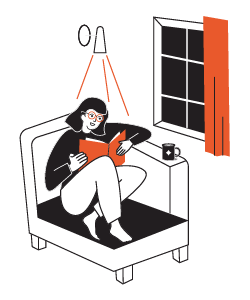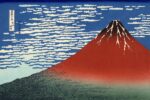Richard Newton – Lost Angeles
.jpg)
Mucho Mas! riapre la stagione presentando “Lost Angeles” di Richard Newton.
Comunicato stampa
Giovedì 19 Settembre alle ore 18:30 Mucho Mas! riapre la stagione presentando “Lost Angeles” di Richard Newton
La mostra sarà visitabile fino al 20 ottobre, dal lunedì al venerdì dalle 15 alle 18:30 e sabato e domenica su appuntamento, da Mucho Mas! Corso Brescia 89, Torino
--
LOST ANGELES
By Richard Newton
Get Lost: A Hitchhikers Guide to Nowhere
“Tutti i percorsi sono uguali: non portano da nessuna parte.”
Carlos Castaneda, The Teachings of Don Juan: A Yaqui Way of Knowledge
Sin dall’inizio, la mia provenienza è stata altamente sospetta, come un’opera d’arte bastarda e contraffatta. Mentre mia madre ed io viaggiavamo a sud su un treno, ho iniziato, all’età di sei anni, una vita nomade di identità confusa. Non ricordo nemmeno il volto di mia madre in quel viaggio; solo la faccia della persona che chiacchierava accanto a noi. Eva, mia mamma, ha avuto modo di avviare conversazioni con uomini strani. Eravamo in fuga perché aveva convenientemente dimenticato di menzionare a suo marito a Oakland che il figlio che aveva così orgogliosamente chiamato Junior, era probabilmente la discendenza di un uomo di passaggio. I miei piedi erano piantati saldamente nel paesaggio in movimento, che era ed è quell’allucinazione che chiamiamo California. Il mio viaggio attraverso questo paesaggio è una ricerca per conoscere il mio posto.
Lo so, ho preso la strada. Destinazione sconosciuta. Ma come The Thing, un’attrazione lungo la strada nel sud dell’Arizona, l’impensabile si trova proprio dietro l’angolo, nelle fermate dei camionisti, in tutti i caffè notturni e nei motel di città con bar da quattro soldi. Come Simon & Garfunkel, stavo cercando l’America e me stesso, e anchemia madre, che non ho mai più visto dopo il viaggio in treno per Los Angeles. Sono stato abbandonato a me stesso a Los Angeles, e Los Angeles mi ha permesso di inventarmi. C’era un nome sul mio certificato di nascita, ma come un attore di Hollywood, ho preso la mia identità dalla sceneggiatura che la mia vita stava scrivendo. Adoro la California.
L’arte strisciava su di me come uno scarafaggio puzzolente in un motel pulcioso. Tirai indietro le lenzuola e allungai la mano lungo il corpo voluttuoso accanto a me. Poi mi ha colpito. L’odore delle cipolle. Dall’ufficio postale appena a nord del Messico, ho spedito alcune centinaia di inviti da cartolina per un’esibizione d’arte: “I take you to a room in Brawley and we smell onions”.
All’epoca, in superficie, tutto era un’escursione nel paesaggio erotico. Avrei vissuto in questo paesaggio per diversi anni, creando arte viscerale e concettuale.
Mentre il movimento artistico femminista chiedeva l’uguaglianza, io mi chiedevo dove il maschile si fondesse con il femminile. Era il mio percorso verso una sessualità di tutto il corpo, per completare l’enigma di un’identità fratturata e conoscere senza successo mia madre.
Da bambino ho imparato ad apprezzare l’oscenità. Una parola che descriveva indecenza e pornografia. Ma sembrava più sporca. Molto più sporca. Sapevo che c’erano cose che potevi fare nella privacy di casa tua. Alcune venivano fatte dai miei genitori adottivi, i Newton.
Quando sono stato abbastanza grande da sporgere il pollice in fuori, l’ho fatto, sono stato raccolto e mi sono perso perso.
Testo di Richard Newton
–
BIOGRAFIA
Richard Newton nasce a Oakland, in California, nel 1948, e consegue un Master in Belle Arti presso l’Università della California a Irvine. Nel 1972 inizia a lavorare con lattine, bottiglie di vetro, pane e altri oggetti di scarto. In parte per mera sopravvivenza e in parte per la fascinazione verso l’abbondanza dell’America, la sua pratica di ricerca nell’immondizia diventa un mezzo per creare opere d’arte ambientali. Beggar’s Banquet, 1972, creato con degli scarti di frutta e verdura installati come due sontuose piramidi, è stato incluso nel “Pacific Standard Time: Los Angeles Art, 1945 - 1980” di Getty.
Nell’estate del 2012, Newton si reca a Tromsø, in Norvegia, per partecipare alla 13a Conferenza internazionale di Ibsen. La conferenza, normalmente riservata agli studiosi, invita quell’anno quattro artisti, uno da ogni continente. Richard Newton, rappresentante degli Stati Uniti, parla della suo lavoro “L’ex Miss Barstow con ogni Tom, Dick e Harry in una casa di bambola”, 1987, e ha discute del processo di adattamento di Ibsen a una specifica situazione culturale e sociale.
Newton espone opere d’arte, libri d’artista, film e video, e presenta performance live e installazioni site specific in tutto il mondo. I suoi libri, unici nel loro genere, sono stati mostrati a DOCUMENTA VI, 1977, a Kassel, in Germania. Le fotografie risultanti dalla performance “In The Privacy of Your Own Home”, 1976, vengono esposte al Mese europeo della fotografia, 2018, Berlino, Germania.
Nel 1982, Paul McCarthy e Richard Newton espongono insieme alla Exile Gallery, nel centro di Los Angeles. Newton costruisce un santuario, The Grotto. Le pareti, il soffitto e i pavimenti vengono realizzati interamente con lattine di birra riciclate. La birra filtrava giù dalle pareti e gocciolava dal soffitto in un pozzo costruito per contenere la birra santa. La Grotta era aperta a tutti e ha dato il benvenuto a tutti per rinfrescarsi. I materiali utilizzati per costruire The Grotto furono infine riciclati.
I primi film e video artistici di Richard Newton vengono proiettati in musei, gallerie, ciné club, festival e in televisione. “Flying with the Angels”, diretto e prodotto con Nancye Ferguson, vince numerosi premi e proiettato in festival e sedi indipendenti in tutto il mondo, tra cui il Pan African Film Festival, Ouagadougou, Burkina Faso. Un altro cortometraggio di Newton, Swift Nudes, vince il primo premio al Certamen Internacional de Cine Ciutat d’Igualada, Barcellona, Spagna.
Il suo primo lungometraggio, “la piccola casa bianca” vince il premio per il miglior primo lungometraggio ed è classificato come miglior film al festival al 19 ° Festival Internacional de Cinema, Figueira da Foz, Portogallo. “la piccola casa bianca” vince anche all’ARCO ‘91, prima Mostra del Cinema Sperimentale, Madrid, Spagna.
I suoi rivoluzionari film di moda, Traction Avenue e Lamy Men, entrambi del 1987, sono proiettati al decimo festival cinematografico A Shaded View of Fashion, 2018, a Parigi, Francia e Roma, Italia.
ENGLISH TEXT
MUCHO MAS EXHIBITION:
LOST ANGELES
By Richard Newton
Get Lost: A Hitchhikers Guide to Nowhere
“All paths are the same: they lead nowhere.”
Carlos Castaneda, The Teachings of Don Juan: A Yaqui Way of Knowledge.
From the beginning, my provenance was highly suspect, like a bastardized counterfeit piece of art. As my mother and I traveled south on the train, from Oakland to the outskirts of Los Angeles, I began, at age six, a nomadic life of confused identity. I don’t even remember my mother’s face on that trip; just the mug chatting next to us. Eva, my mom, had a way of striking up conversations with strange men. We were on the run now because she’d forgotten to mention to her husband in Oakland, that the son he so proudl named Junior, was possibly the progeny of a passing Portuguese Man. My feet were thus planted firmly in the moving landscape that was and is the hallucination we call California. My journey across this landscape is and was a search to know my place.
So, I took to the road. Destination: unknown. But like The Thing, a roadside attraction in Southern Arizona, the unthinkable was just around the bend, in trucker rest stops, all night cafes, and motels in towns with deadbeat bars. Like Simon & Garfunkel, I was looking America, and myself and finally for my mother, whom I never saw again after the train ride to L.A. I was abandoned to find myself in Los Angeles, and Los Angeles allowed me to invent myself. There is a name on my birth certificate, but like a Hollywood actor, I took on the persona from the script my life was writing. I love California.
Art crawled over me like a stinking cockroach in a fleabag motel. I pulled back the sheets and reached out for the voluptuous clammy body next to me. Then it hit me. The smell on onions. From the post office just north of Mexico, I sent out a few hundred postcard invitations to an art performance: I take you to a room in Brawley and we smell onions. At the time and on the surface it was a gender bending excursion into the erotic landscape. I would live in this landscape for several years, creating visceral and conceptual art. As the feminist art movement asked for equality, I wondered where masculine merged with feminine. It was my own path to whole body sexuality, to completing the puzzle of a fractured identity, and unsuccessfully knowing my mother.
As a child I learned to appreciate smut. A word that described indecency and pornography. But sounded dirtier. Much dirtier. I knew there were things you could do In The Privacy of Your Own Home. Some of them were being done by my foster parents, the Newtons.
When I was old enough to stick my thumb out, I did, got picked picked up and got lost.
Text by Richard Newton.
BIO ENG
Richard Newton was born in Oakland, California, 1948, and holds a Master of Fine Arts degree from the University of California at Irvine. In 1972, he began working with cans, glass bottles, bread, produce and other cast-offs. Partly from a need to survive and partly from a sense of fascination for the abundance of America, his practice of dumpster diving and recycling became a means to create environmental works of art. Beggar’s Banquet, 1972, created from one night’s bounty of discarded fruits and vegetables installed as 2 lavish pyramids was included in the Getty’s “Pacific Standard Time: Los Angeles Art, 1945 - 1980.”
In the summer of 2012, Newton travelled to Tromsø, Norway to participate in the 13th International Ibsen Conference. The conference normally reserved for scholars, invited 4 artists. One each, from Asia, Africa, Europe and Richard Newton from USA. He spoke about his production, The Former Miss Barstow with every Tom, Dick, and Harry in a doll’s house, 1987, and discussed the process of adapting Ibsen to a specific cultural and societal situation.
Newton has shown artworks, artists’ books, films & videos and presented live performances and site-specific installations throughout the world. His one-of-a-kind books were shown at DOCUMENTA VI, 1977, in Kassel, Germany. He exhibited photographs based on his In The Privacy of Your Own Home, 1976, at the European Month of Photography, 2018, Berlin, Germany.
In 1982, Paul McCarthy and Richard Newton exhibited together at Exile Gallery on the edge of Skid Row in downtown Los Angeles. Newton built a sanctuary, The Grotto. The walls, ceiling, and floors were made entirely of recycled beer cans. Beer seeped down the walls and dripped from the ceiling into a well built to hold the holy beer. The Grotto was open to all and welcomed all to refresh themselves. The materials used to construct The Grotto were eventually recycled.
Richard Newton’s early art films and videos have shown at museums, galleries, ciné clubs, festivals, and on television. Flying with the Angels, directed and produced with Nancye Ferguson, won many awards and screened at festivals and independent venues around the world, including the Pan African Film Festival, Ouagadougou, Burkina Faso. Another one of Newton’s short films, Swift Nudes, won first prize at Certamen Internacional de Cine Ciutat D’Igualada, Barcelona, Spain.
His first feature film, small white house won the award for Best First Feature and was runner- up as best film in the festival at the 19th Festival Internacional de Cinema, Figueira da Foz, Portugal. small white house also won at the ARCO ‘91, 1st Exhibition of Experimental Cinema, Madrid, Spain.
His groundbreaking fashion films, Traction Avenue and Lamy Men, both 1987, were shown at the 10th A Shaded View of Fashion film festival, 2018, in Paris, France and Roma, Italy.



